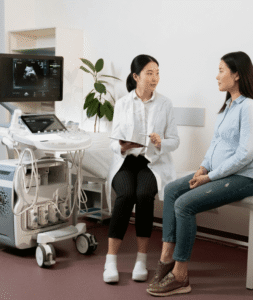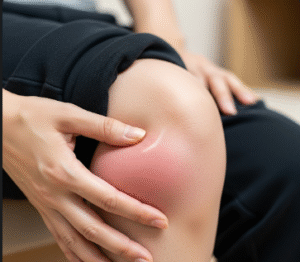Overview
Cystolitholapaxy is a minimally invasive urological procedure designed to remove bladder stones (cystoliths) using specialized instruments inserted through the urethra. This procedure is preferred over open surgery for most cases because it reduces recovery time, minimizes complications, and preserves bladder function.
In South Korea, cystolitholapaxy is performed in advanced urology centers and hospitals using state-of-the-art endoscopic tools. The procedure is especially useful for patients with recurrent bladder stones, urinary tract obstruction, or other urological conditions.
What is Cystolitholapaxy?
Cystolitholapaxy involves breaking up and removing bladder stones using a cystoscope, a thin tube with a camera and specialized instruments. There are two main approaches:
- Mechanical or laser lithotripsy: Stones are fragmented with a laser or mechanical device and removed piece by piece.
- Ultrasonic or pneumatic devices: For larger stones, these devices break them into smaller fragments.
Indications include:
- Recurrent or symptomatic bladder stones
- Urinary retention due to stones
- Blood in urine (hematuria) caused by stones
- Infection or pain from stones
- Obstruction of urinary flow
Purpose:
- Remove stones causing urinary symptoms or complications
- Restore normal bladder and urinary function
- Prevent recurrent urinary tract infections or kidney damage
- Provide tissue fragments for analysis if needed
What are the Benefits?
Cystolitholapaxy provides several advantages over traditional open bladder surgery:
✔ Minimally invasive with faster recovery.
✔ Reduces pain and hospital stay compared to open surgery.
✔ High success rate in stone removal.
✔ Can be performed on patients with comorbidities or high surgical risk.
✔ Lowers risk of bladder or urethral trauma.
✔ Enables precise removal of stones, improving urinary function.
Procedure Details
1) How should I prepare for Cystolitholapaxy?
- Medical evaluation: Blood tests, urine tests, and imaging (ultrasound, X-ray, or CT scan) to determine stone size, number, and location
- Medication review: Discontinue blood thinners if advised
- Preoperative counseling: Discuss anesthesia options, procedure steps, and post-procedure care
- Hydration: Patients may be advised to drink fluids or fast before the procedure
- Consent: Understand the procedure, benefits, risks, and recovery expectations
South Korean urology centers provide detailed preoperative guidance and individualized preparation to optimize safety and outcomes.
2) What happens during Cystolitholapaxy?
- Anesthesia: General or spinal anesthesia is commonly used
- Cystoscope insertion: A thin, flexible tube with a camera is inserted through the urethra into the bladder
- Stone fragmentation: Stones are broken into small pieces using laser, ultrasonic, or mechanical lithotripsy
- Stone removal: Fragments are removed using specialized graspers or suction devices
- Duration: Typically 30–60 minutes, depending on stone size and number
South Korean surgeons emphasize precision, minimal trauma, and complete stone clearance using advanced cystoscopic equipment.
3) What happens after Cystolitholapaxy?
- Immediate post-op: Temporary discomfort, urinary urgency, or mild hematuria may occur
- Catheterization: A temporary urinary catheter may be placed for 1–2 days to aid bladder healing
- Medication: Pain relievers and antibiotics are often prescribed to prevent infection
- Follow-up: Imaging or ultrasound to confirm complete stone removal and monitor for recurrence
- Activity: Gradual return to normal activities; avoid strenuous activity until cleared by the doctor
Risks / Benefits
Potential Risks:
- ➤ Blood in urine (hematuria) for a few days
- ➤ Infection or urinary tract infection
- ➤ Bladder or urethral injury (rare)
- ➤ Incomplete stone removal requiring repeat procedure
- ➤ Temporary urinary urgency or discomfort
Major Benefits:
- ✔ Minimally invasive and highly effective for stone removal
- ✔ Reduces pain, hospital stay, and recovery time
- ✔ Preserves bladder function and reduces complications
- ✔ Low risk of recurrence with proper follow-up and lifestyle modifications
- ✔ Allows precise treatment for multiple or large stones
Recovery and Outlook
- Immediate: Mild discomfort, burning, or blood-tinged urine may occur
- 1–2 weeks: Symptoms generally subside; urinary function normalizes
- Follow-up: Regular imaging or urine tests ensure stones have been fully cleared
- Long-term: Proper hydration, diet adjustments, and management of underlying conditions reduce recurrence risk
South Korean hospitals provide comprehensive post-procedure monitoring and guidance to ensure safe recovery and optimal urinary health.
When To Call the Doctor
Contact your urologist if you notice:
- ➤ Severe pain, persistent bleeding, or clot formation
- ➤ Fever, chills, or signs of infection
- ➤ Difficulty urinating or inability to pass urine
- ➤ Recurrent urinary symptoms or discomfort
- ➤ Any unusual symptoms beyond expected recovery
Best Korea Option / Process
South Korea offers state-of-the-art cystolitholapaxy services due to:
- Expert urologists with extensive experience in minimally invasive stone removal
- Advanced cystoscopic and laser equipment for precise stone fragmentation
- Comprehensive pre- and post-operative care
- Integration with preventive strategies for recurrent stones
- International patient support including scheduling, translation, and follow-up
- High safety standards and excellent clinical outcomes
Top hospitals for cystolitholapaxy in Korea:
- Samsung Medical Center, Seoul
- Asan Medical Center, Seoul
- Severance Hospital (Yonsei University Health System)
- Seoul National University Hospital – Urology Department













